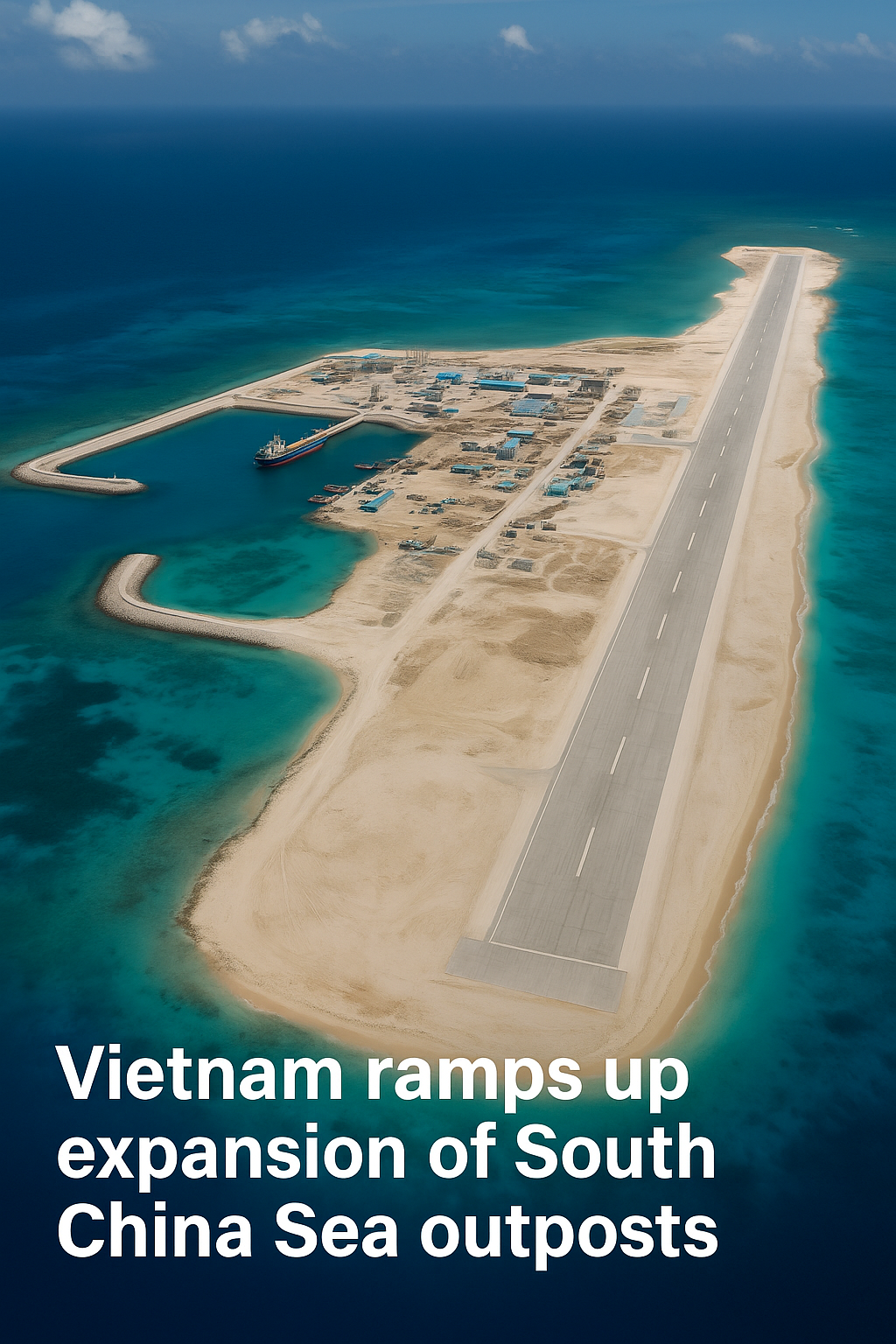Vietnam has been actively increasing its presence in the South China Sea by expanding land on several islands and reefs it controls in the Spratly Islands.
🌊 Vietnam’s Island Makeover Sends Shockwaves Through Asia
This region, which is called the Nansha Islands by China, is highly disputed. Many countries, including China, Vietnam, the Philippines, and Malaysia, claim parts of it. The area is strategically important because of its location and potential natural resources.
Over the last six months, Vietnam has reclaimed around 0.78 square kilometers (almost 0.3 square miles) of land on 11 different Spratly Island features, according to the South China Sea Probing Initiative (SCSPI), a Chinese think tank. This shows Vietnam’s continuing effort to build up its outposts.
Since October 2021, it has added more than 8.5 square kilometers of new land on these features, marking a significant increase in its activities there. The reclaimed land is used for various purposes, including military-related construction. Vietnam has been building new ports, harbors, and runways to strengthen its hold in the contested waters.
Hanoi’s Nuclear Leap: Vietnam Bets Big on Russian Reactors — West Watches With Growing Unease
🛫 Military-Scale Runways and Ports Raise Eyebrows
One of the major developments reported is the construction of a large airstrip on Barque Canada Reef. This reef has seen the most land added by Vietnam — about 2.8 square kilometers since last November. The planned airstrip is expected to be around 3,000 meters (nearly 10,000 feet) long when finished.
This length is important because it allows big military aircraft to take off and land. Large planes such as transport planes, bombers, or surveillance aircraft need long runways. This means Vietnam is preparing to use these outposts for stronger military operations.
Besides Barque Canada Reef, Vietnam is also building smaller sandbars that could support airstrips on four other features: Pearson Reef, Tennent Reef, Ladd Reef, and South Reef. Vietnam’s larger plan to bolster its presence and authority includes these new buildings.
South Reef is especially notable because it is only about 50 kilometers (31 miles) north of Subi Reef, which is controlled by China. This close proximity highlights the tense and competitive nature of the territorial claims.
Vietnam’s Boldest Break: F-16 Deal Marks Dramatic Split from Russia’s Fading Grip
⚔️ Strategic Gamble as China Chooses Silence
Vietnam’s efforts come amid ongoing disputes in the South China Sea, where several countries claim overlapping parts of the sea and islands. China has made massive land reclamation projects in the Spratly Islands between 2013 and 2015. Following these initiatives, China constructed airstrips spanning over 3,000 meters on three sizable man-made islands: Subi Reef, Mischief Reef, and Fiery Cross Reef.
According to experts, the strategic location of Barque Canada Reef may put more pressure on China if an airstrip of comparable capacity is built there. The controlled features lie both south of many Chinese military installations and north of others, which could allow the country to “straddle” or position itself around China’s military points in case of conflict.
Despite these rising activities by Vietnam, China has been notably quiet about Vietnam’s land reclamation efforts. This silence is believed to be connected to warming relations between Beijing and Hanoi and China’s concern over the growing alliance between the Philippines and the United States.
At the same time, China has been vocal and confrontational when it comes to clashes with the Philippines, especially near disputed areas like Scarborough Shoal, Second Thomas Shoal, and Sandy Cay. For example, Chinese and Philippine forces recently planted their national flags on Sandy Cay, a small coral reef, to claim it.
Vietnam’s development efforts serve as a reminder of the South China Sea’s continuous complexity and rivalry. The continued building of ports, airstrips, and reclaimed land shows how countries in the region are trying to assert control over important maritime features. The South China Sea remains a hotspot with multiple overlapping claims and increased military presence from different nations.
Author and veteran journalist Ruta Deshpande is Chairman of the Editorial Board of the Deftech Times and has been commenting on politics, foreign policy, and strategic affairs for nearly three decades.

